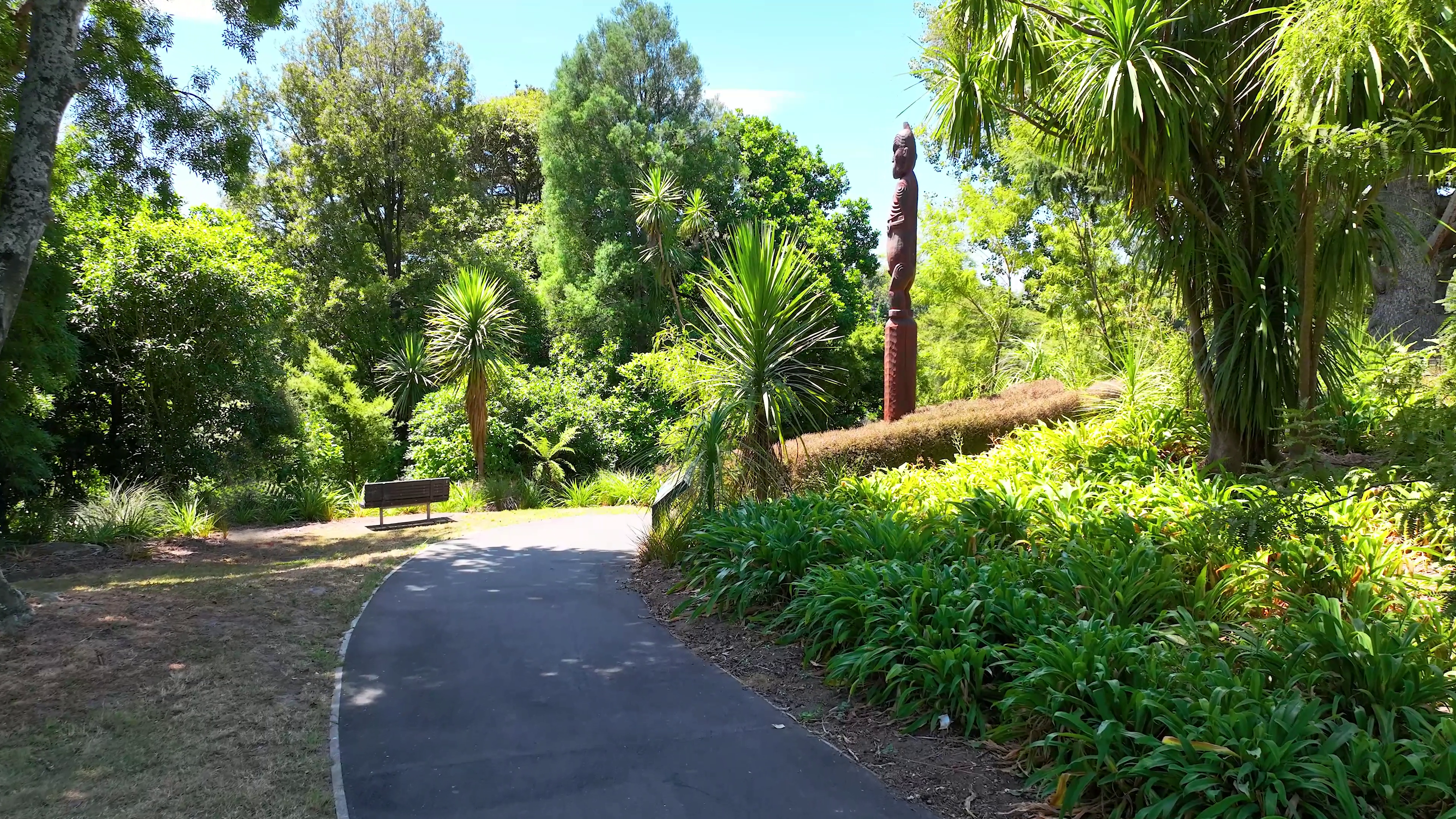

Our History
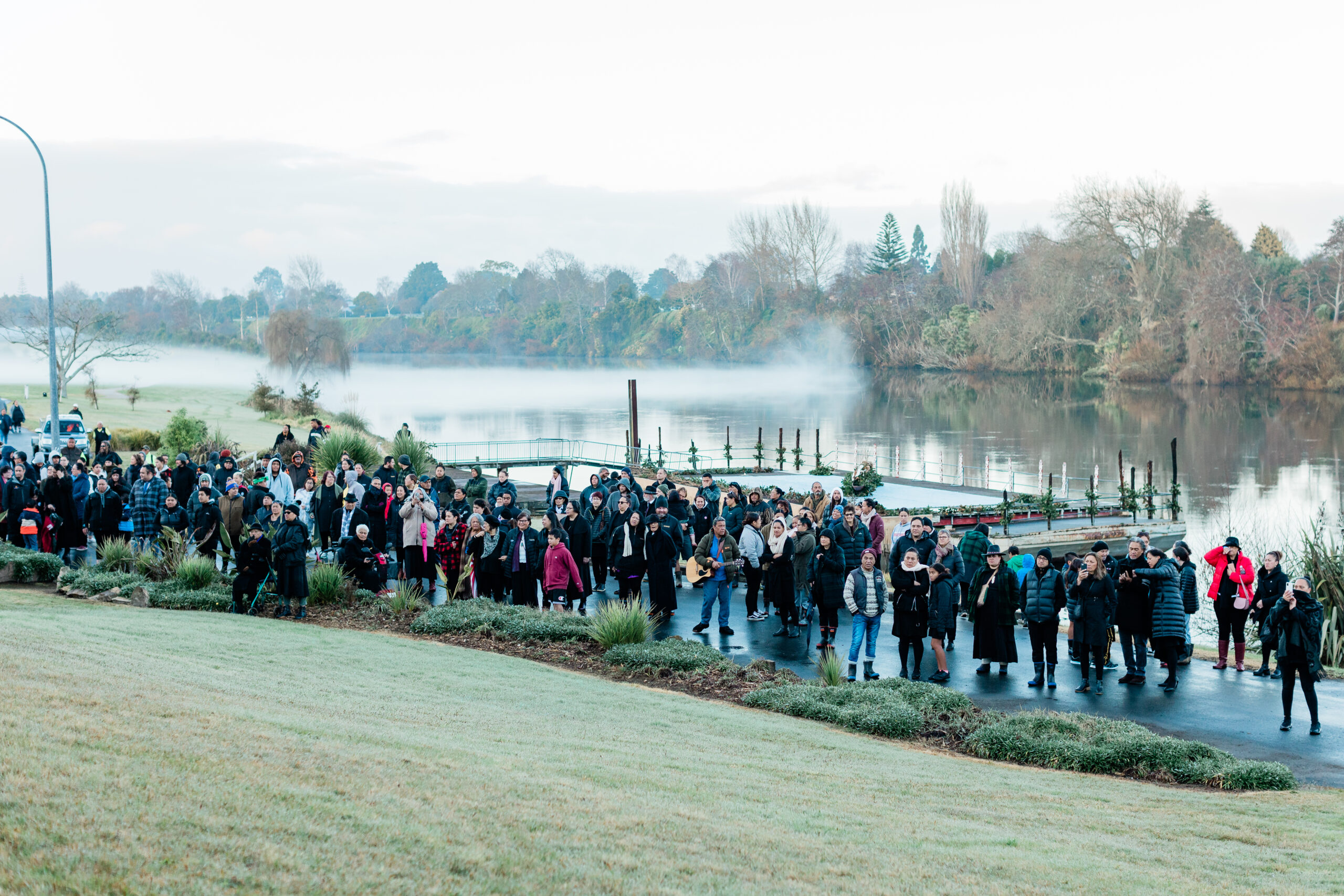
'Anga whaka muri, anga whaka mua’
‘Anga whaka muri, anga whaka mua’ is a
Trust Waikato draws wisdom from the past to help shape a meaningful future. We place emphasis on the importance of knowing, understanding, and learning about our history, ancestors, and cultural heritage, while also looking ahead. Anga whaka muri, anga whaka mua encourages a balanced approach that combines traditional wisdom with further innovation and forward thinking.

Whakapapa
Our rich journey begins well before the creation of Trust Waikato in 1988, and even before the establishment of the community saving banks in the 1950’s. We journey back to pre-1800’s and pay homage to
Our
Ko te waka ko Tainui - Tainui is the waka
E rere Waikato awa e - Waikato river flow
Ko te iwi ko Waikato - Waikato is the tribe
Te Puna o Waikato e - Trust Waikato
Ko Te Puna o Waikato - We are Trust Waikato
E mahi nei i ngaa mahi - Serving our communities
Ki a tupu, ki a hua - To grow, and to flourish
Ngaa iwi whaanui e
The waiata references the Tainui
It also signifies the Waikato River’s importance, seen as being part of the bloodline of the people, with the history of the people being interconnected with the river.
Wairere means flowing water, and Ngaati Wairere is the Waikato-Tainui tribe who lived upon the lands of what is now Kirikiriroa (Hamilton City) since the mid to late 16th century until their land was confiscated by the Crown after the 1863 Land Wars.
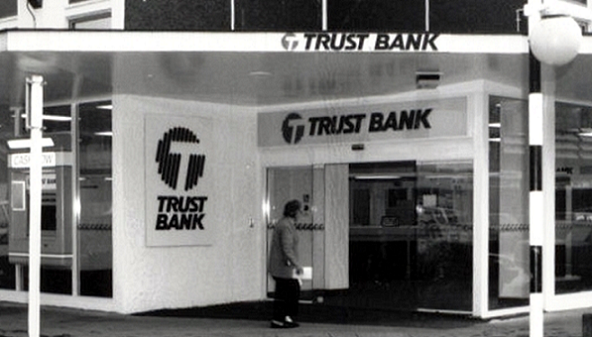
Community Trusts
In 1988, the Government established 12 independent Community Trusts throughout New Zealand, and ownership of the 12 banks was given to the communities, each with 100 per cent ownership of the shareholding in their regional trustee savings bank.
The specified area of operations of each of the 12 Trusts mirrors the area serviced by their regional savings bank, covering the whole of New Zealand. Several of the regional banks amalgamated, resulting in the establishment of Trust Bank New Zealand Ltd. By April 1996, most of the community trusts sold their respective bank shareholdings to Westpac Banking Corporation.

Trust Waikato - Te Puna o Waikato
Prior to Trust Bank Waikato Community Trust being fully established in 1988, the Waikato Savings Bank (eventually known as Trust Bank Waikato) made grants to the community. In the period from 1959 to 1988, the bank donated just over $2 million to Waikato community groups.
By 1989, Trust Bank Waikato Community Trust’s assets were valued at $21.3 million. Through prudent and wise investment, the capital fund has continued to grow significantly. A portion of the profits each year have been granted to community groups and projects throughout the Waikato region.
In 1997, the Trust rebranded and became known as ‘The Waikato Community Trust’. However, despite the name change, there was still a lot of confusion in the community about the Trust and its relationship with the bank. In September 1999, a further rebranding occurred where the Trust became known as ‘Trust Waikato – Te Puna o Waikato’, while keeping its legal name, ‘The Waikato Community Trust’.
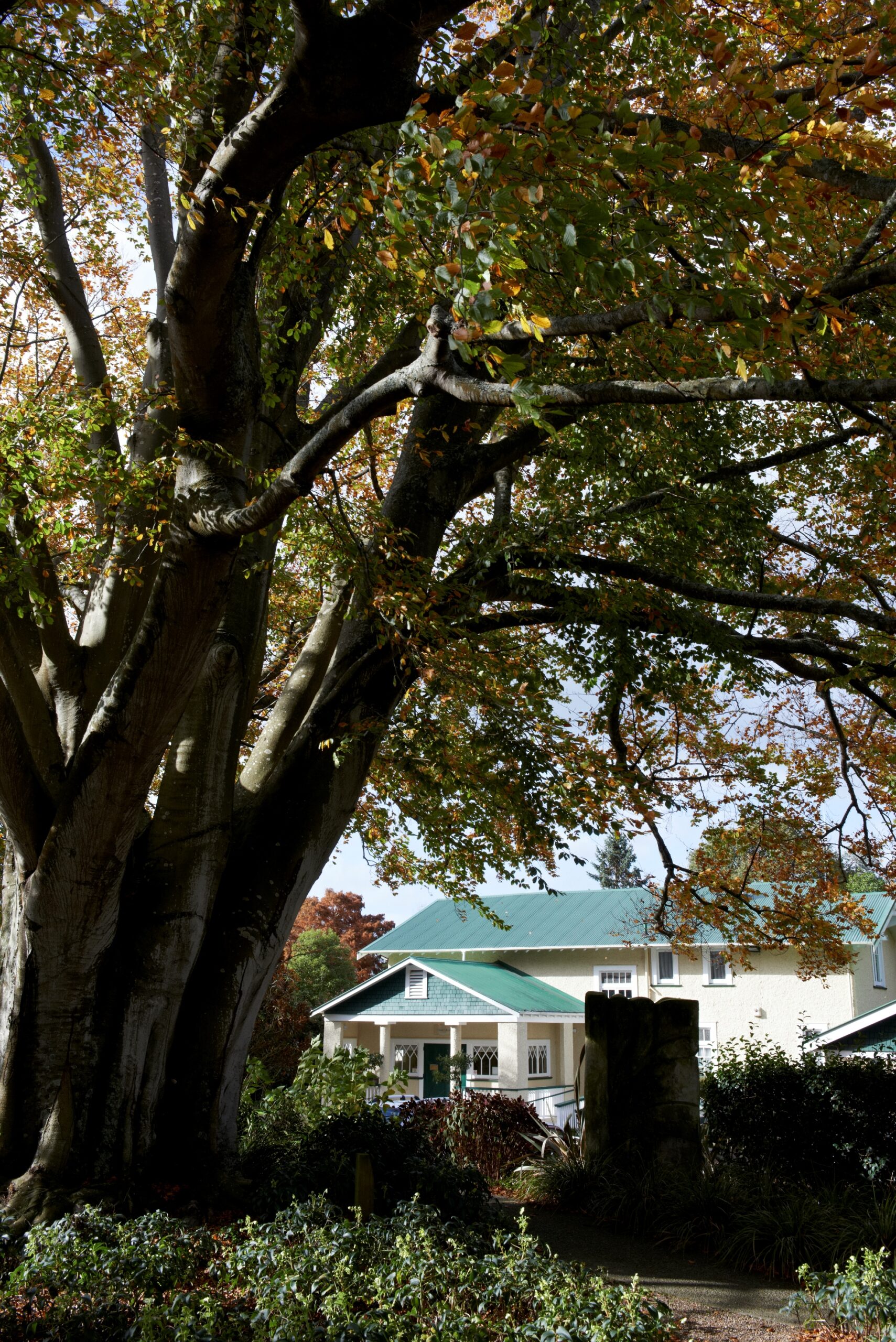
Trust House and Cottage
The Trust decided to purchase the historic property that became known as Trust House at 2 London Street, Hamilton in 1998 after renting numerous office spaces in the Hamilton central business district. Built in 1914 for Eugene (Tim) and Gwendoline Rogers, this family home was where they raised their three children: Anthony (Rufus), Patricia, and Denis (Mick). A general practitioner, Eugene Rogers’ medical rooms were located next door at 6 Little London Lane. His sons Anthony and Denis also worked in their father’s practice for many years. Anthony was an MP for Hamilton East from 1972-1975, and later served as a Waikato Savings Bank/Trust Bank Waikato trustee (as did Denis) and was a foundation trustee for Trust Waikato. Denis served as Mayor of Hamilton from 1959 to 1968.
The following year, in 1999, the Trust purchased Trust Cottage at 4 Little London Lane. Originally built as an art studio for Gwendoline Rogers, Denis Rogers eventually moved into the studio with his family and numerous extensions were carried out. The home was later sold to the McGregor family and became known as McGregor House. The Trust also purchased the land between Trust House and Trust Cottage, which was developed into gardens for the community to enjoy. We acknowledge the properties and adjoining gardens are all sited on what was once Ngaati Wairere’s Kirikiriroa Paa.
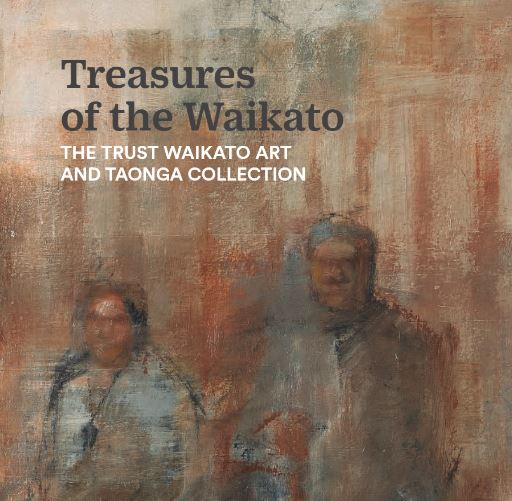
Art and Taonga Collection
Trust Waikato began collecting art and taonga of significance to the Waikato region in 1999. In October 2015, the collection of 260 pieces was gifted to the Waikato Museum.
The book, Treasures of the Waikato, includes all the art and taonga in the Trust Waikato collection as at 2015. The Trust continues to support the museum to grow the collection.
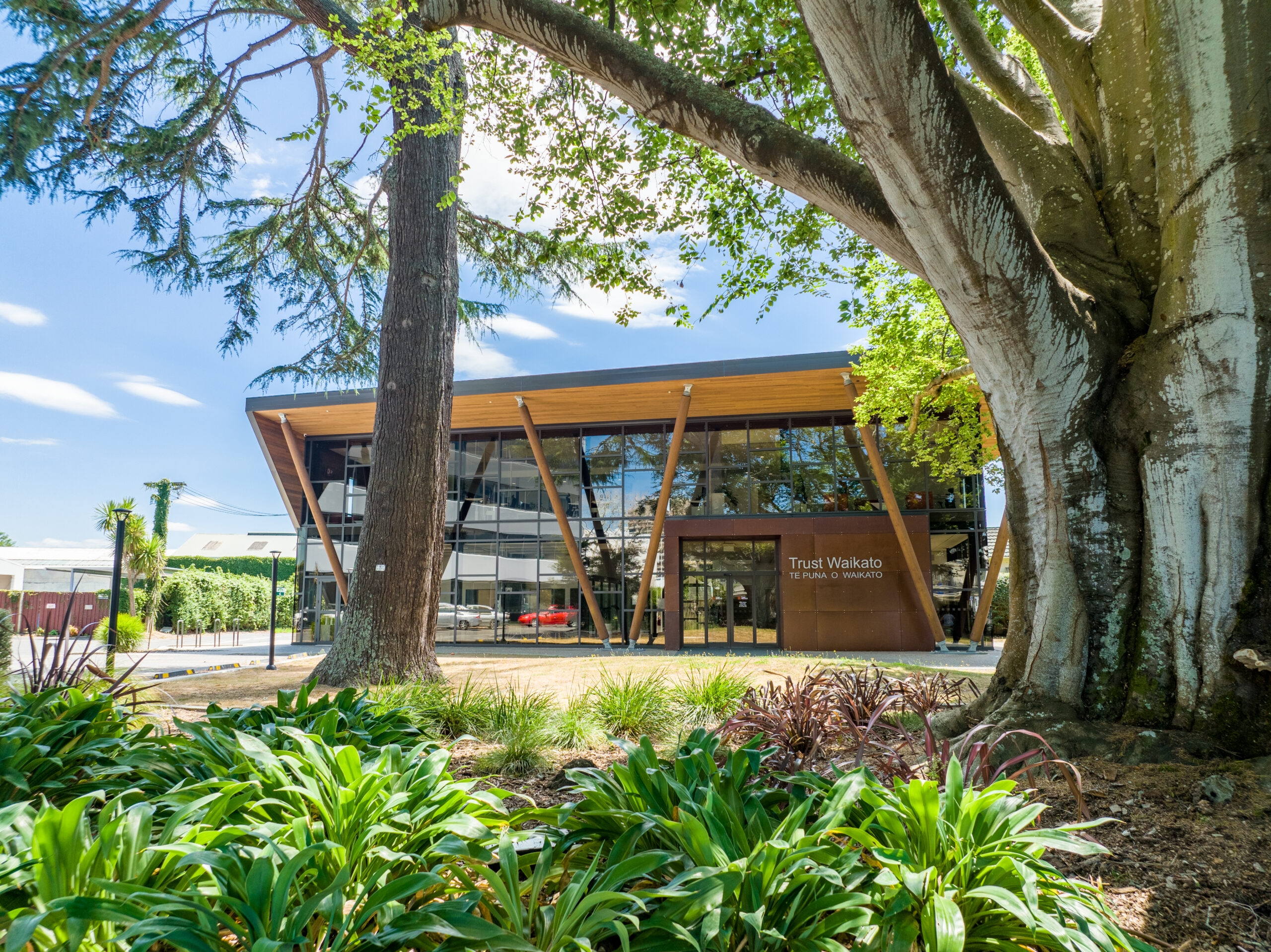
Purpose-built Community Building
Having outgrown Trust House and Trust Cottage by the mid 2010’s, a building project began in 2017 for a purpose-built, two-story community facility at 4 Little London Lane. The building includes purpose-built meeting rooms on the ground floor. Many cultural elements have been weaved into the
Opened in 2018, the building and its community spaces have become a hive of activity for hundreds of community groups and organisations facilitating greater connections and helping to realise our vision for vibrant and resilient communities. Trust House is now home to two regional community organisations.
Get to know our Trust Waikato whaanau
Trust Waikato employs nine staff, all specialists in their area of accountability, working together as a team to support community aspirations.

